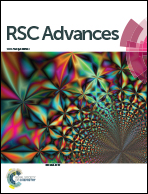Facile hydrothermal synthesis of SnO2/C microspheres and double layered core–shell SnO2 microspheres as anode materials for Li-ion secondary batteries†
Abstract
SnO2/C microspheres and double layered core–shell SnO2 microspheres have been synthesized by a facile hydrothermal method with a post heat-treatment. The soluble starch used as carbon source and the mass ratio of starch to SnCl4·5H2O play key roles in the formation of SnO2/C microspheres, and the hydrothermal synthesis mechanism of SnO2/C microspheres has been proposed. SnO2/C-1.0 microspheres (the mass ratio of soluble starch to SnCl4·5H2O is 1 : 1) with good spherical shape and 34.91 wt% of SnO2 exhibit superior rate capability and cyclic stability, while double layered core–shell SnO2 microspheres show improved electrochemical performance compared to SnO2 particles. The electrode based on SnO2/C-1.0 microspheres delivers a reversible discharge capacity of 568 mA h g−1 at a constant current density of 100 mA g−1 in the second cycle, and 379 mA h g−1 (67% retention) is retained after the 50th cycle, suggesting SnO2/C microspheres are promising candidates for energy storage.


 Please wait while we load your content...
Please wait while we load your content...